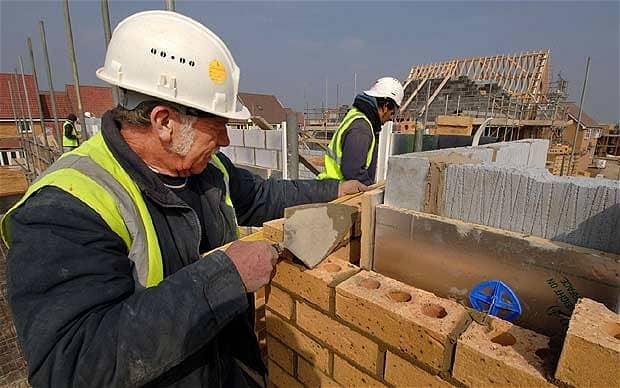Allowing builders to select their own suppliers and subcontractors
Contents |
[edit] Introduction
It is commonplace for clients to ask their builder to use a trade contractor with whom they have an established relationship, and to allow that trade contractor to purchase their own materials, supplies, and surface protection.
Homeowners commonly do this to establish an apparent environment of accountability and trust. However, this can be a detriment to the building process. Builders purchase from their suppliers and select subcontractors based upon positive lessons learned through prior experience, as a builder's reputation is vital to maintaining ongoing success. Allowing the builder to use familiar subcontractors and suppliers can be in the best interest of the homeowner.
[edit] Purchasing from experienced and reliable suppliers
Allowing a builder to purchase from previously tried and tested suppliers provides assurance that all products are reliable, consistent, dependable, and pose no threat of damage to a client's home. Builders use established suppliers precisely because they can stand behind the reliability and dependability of the purchased products, and because they truly feel that using these products is in the best interests of the homeowner.
What good is protecting a newly-installed carpet with cut-rate temporary carpet film when it leaves a residue on the new carpet? The extra cost spent cleaning the carpet is significantly more than the price savings.
In an effort to save on material costs, homeowners will frequently look online and look towards multiple suppliers to provide necessary fixtures for their homes. People are frequently unaware of the intricacies and the risks involved through sourcing their own products. It is commonplace that small parts of plumbing fixtures, lighting arrangements, etc. need to be ordered separately.
In addition to creating time delays, this may pose a risk that the ordered products fail to meet the needs of the project, resulting in breakage and even damage to a home. If in an attempt to save a little bit on a remodel, a homeowner may inadvertently order a sink that fails to meet the water pressure limits of a home, this can result in flooding damage that may not be covered by warranties. The best way to minimise any risk in a home remodel can be to allow the builder to purchase from proven suppliers.
[edit] Builder-selected subcontractors
There are even more compelling reasons for using regular subcontractors. Builders depend on subcontractors as much as they depend on employees - trade partners are an integral part of the builder's team. Thus, builders tend to award major contracts (the wiring of a custom home, for instance) only to subcontractors that have proven themselves. With proven trades, accurate bids can be assembled quickly, and the builder understands and trusts the quality promised by those bids.
Builders often evaluate subcontractors over the course of years. Subcontractors are initially placed to complete small jobs to evaluate their abilities. Even once a subcontractor has demonstrated their ability, they are still evaluated on metrics such as how available for contact they are, how accurate their bids are, how well they work with the customer and the builder, and how their work holds together over a period of years. Further, allowing the builder to choose subcontractors allows both the sub and the builder to coordinate on efforts such as using temporary surface protection to protect the home from dust and damage.
Ultimately, it is in a subcontractor's interest to complete the work as well as possible. Completing projects in a professional and attentive manner ensures future work for the subcontractor. A builder that uses an untested subcontractor risks losing control over the quality of the building. As such, any problems caused by painters, contractors, and products bought by the customer cannot be prevented by the builder's due diligence.
Perhaps the painter suggested by the homeowner failed to protect the newly installed wood floor from paint splatter resulting in costly resurfacing. Any of these problems will reflect poorly on a builder's reputation, and a builder's reputation is the basis for earning future work.
Builders prefer purchasing from certain suppliers and use specific subcontractors because they believe it is in the best interest of the homeowner.
[edit] Related articles on Designing Buildings Wiki
Featured articles and news
Infrastructure that connect the physical and digital domains.
Harnessing robotics and AI in challenging environments
The key to nuclear decommissioning and fusion engineering.
BSRIA announces Lisa Ashworth as new CEO
Tasked with furthering BSRIA’s impressive growth ambitions.
Public buildings get half a million energy efficiency boost
£557 million to switch to cleaner heating and save on energy.
CIOB launches pre-election manifesto
Outlining potential future policies for the next government.
Grenfell Tower Inquiry announcement
Phase 2 hearings come to a close and the final report due in September.
Progress from Parts L, F and O: A whitepaper, one year on.
A replicated study to understand the opinion of practitioners.
ECA announces new president 2024
Electrical engineer and business leader Stuart Smith.
A distinct type of countryside that should be celebrated.
Should Part O be extended to existing buildings?
EAC brands heatwave adaptation a missed opportunity.
Definition of Statutory in workplace and facilities management
Established by IWFM, BESA, CIBSE and BSRIA.
Tackling the transition from traditional heating systems
59% lack the necessary information and confidence to switch.
The general election and the construction industry
As PM, Rishi Sunak announces July 4 date for an election.
Eco apprenticeships continue help grow green workforce
A year after being recognised at the King's coronation.
Permitted development rights for agricultural buildings
The changes coming into effect as of May 21, 2024.






















